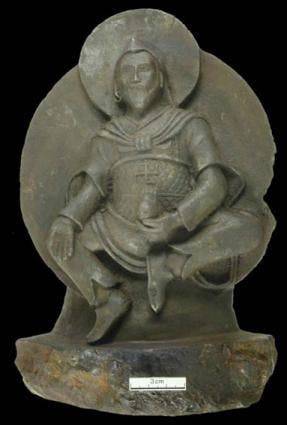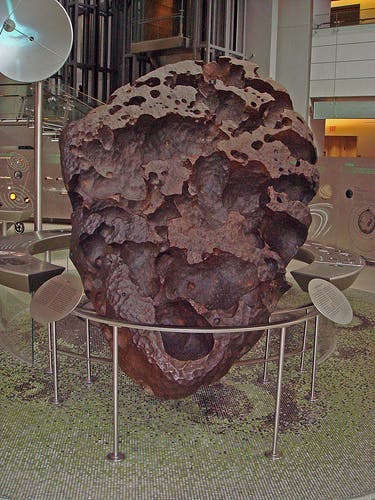A Buddhist statue brought to Germany by a Nazi expedition to Tibet has been proven to be of extraterrestrial origin. Sounds like an Indiana Jones movie, right? Well, it isn’t.

Known as the ‘Iron man’ the 24 cm high sculpture was carved out from a Chinga meteorite (rich in iron) found near the Mongolian-Russian border that crashed down to the Earth somewhere between 10.000 and 20.000 years ago. The sculpture most likely depicts the god Vaiśravaṇa, the chief of the Four Heavenly Kings, an important figure in Buddhist mythology.
The team analyzed the statue and the geochemistry suggested by the iron, nickel, cobalt, and other trace elements very much matches the Chinga meteorite. The piece that made the ‘Iron man’ is the third biggest known from that fall.
Interestingly enough, the material is extremely hard, and not adequate for sculptures, because it requires a huge effort to carve; this means the artist definitely knew the rock was somehow special and worth the effort. It is still unknown who made the statue and when, but archaeologists believe it was created by the 11th century Ben culture – more exact estimates are impossible at the moment.
The Nazis were probably thrilled by the fact that the statue has a Swastika on it, a symbol they adopted and distorted during World War II.
“While the first debris was officially discovered in 1913 by gold prospectors, we believe that this individual meteorite fragment was collected many centuries before,” said Buchner in a statement. “The Iron Man statue is the only known illustration of a human figure to be carved into a meteorite.”
Although this is the only known meteorite human carving, other meteorites have been given a religious sense across the world. The best example comes from North America, where a piece called the Willamette meteorite is sacred for to some native Americans.

Scientific source






